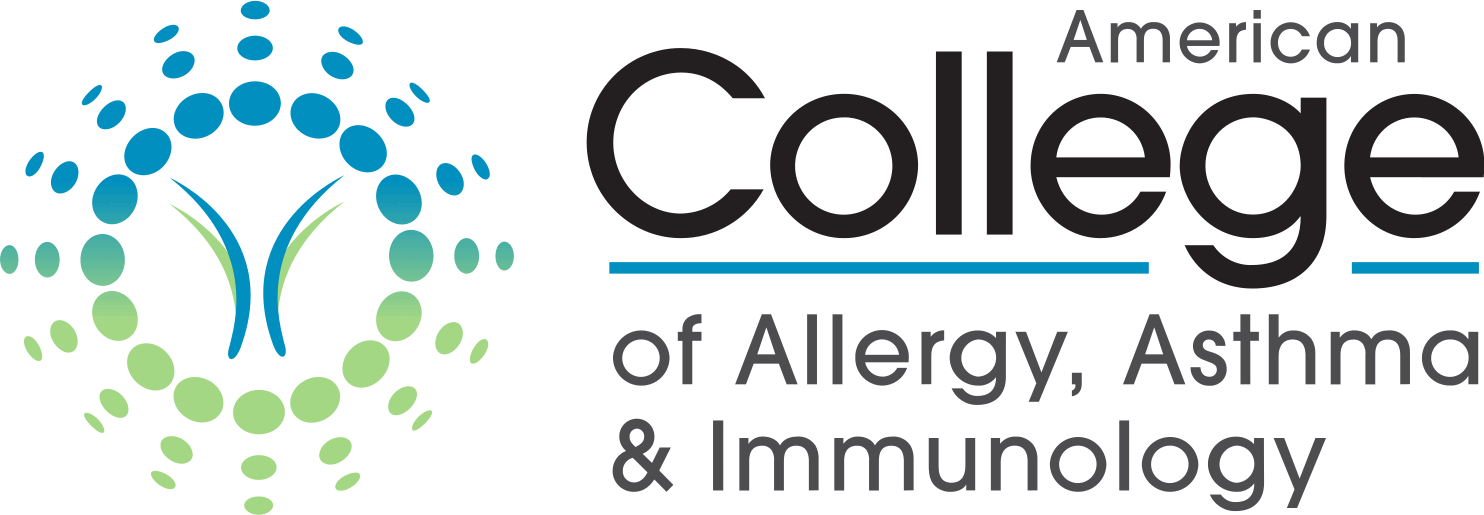For Immediate Release
Contact: Jo Ann Faber (847) 427-1200[email protected]
As Many as 39 Million Americans Have Nonallergic Rhinitis - A Higher Prevalence than Previously Thought
ARLINGTON HEIGHTS, Ill. (May 22, 2001) - New prevalence data indicates nonallergic rhinitis is more common than previously thought, affecting as many as 39 million Americans.
An estimated 17 million Americans are afflicted with nonallergic rhinitis, and an additional 22 million people suffer with a combination of allergic and nonallergic disease according to the report published this month in Annals of Allergy, Asthma & Immunology, the scientific journal of the American College of Allergy, Asthma and Immunology (ACAAI).
"Nonallergic rhinitis is a broad classification for chronic nasal symptoms of nasal diseases without allergic causation," said co-author Russell A. Settipane, M.D., Brown Medical School, Providence, R.I. "People with this condition have negative allergy skin tests to relevant allergens and normal serum IgE. As many as half of patients with nasal symptoms may have this disorder.
"Given the often indistinguishable symptoms and high incidence of nonallergic rhinitis, treatment should ideally be based on a diagnosis that includes allergy testing. However, rhinitis is often treated without proper diagnosis. Oral antihistamines, most often chosen for empirical treatment, have not been studied for their effectiveness in the treatment of nonallergic rhinitis," Dr. Settipane said.
Study conclusions were based on results of a national survey of allergists and a review of existing data. The report suggests treatment options for rhinitis patients who have not been diagnosed through allergy testing should be limited to medications that have been demonstrated to be effective for both allergic and nonallergic disease.
"The cost of treatment as well as the clinical implications suggest that oral antihistamines may not be the ideal approach to the treatment of rhinitis without a definitive diagnosis of allergic disease," said co-author Philip Lieberman, M.D., University of Tennessee School of Medicine, Memphis.
"For long-term control of symptoms, topical medications are preferred to systemic, and treatment should address all symptoms. Azelastine (antihistamine) nasal spray and intranasal corticosteroids have demonstrated their effectiveness and have been approved by the Federal Drug Administration for treatment of nonallergic rhinitis. Topical saline in the form of a spray or irrigation device is sometimes effective," Dr. Lieberman said.
Nonallergic rhinitis symptoms are similar to those of allergic rhinitis (hay fever) and may include runny nose, nasal congestion, nasal itch, sneezing and eye irritation. Nonallergic rhinitis occurs more frequently in adults than in children, may be more common in women, and is more likely to be perennial than seasonal.
Forms of nonallergic rhinitis mentioned in the report include syndromes of unknown origin including vasomotor rhinitis (VMR), nonallergic rhinitis with eosinophilia syndrome (NARES), and basophilic/metachromatic cell nasal disease (BENARS, nasal mastocytosis). Nonallergic rhinitis may also be drug-induced.
Vasomotor rhinitis is the most common form of nonallergic rhinitis, usually associated with environmental conditions, such as cold air, high humidity, strong odors and inhaled irritants. Nasal blockage was reported to be the predominant symptom in patients with VMR, whereas allergic rhinitis patients were more likely to suffer from eye irritation, some sneezing and runny nose.
"Azelastine nasal spray has been shown to improve all individual symptoms usually present in vasomotor rhinitis. This may be because, in part, of its antihistaminic and anti-inflammatory activities," Dr. Lieberman said.
The ACAAI is a professional medical organization comprised of 4,100 qualified allergists-immunologists and related health care professionals. The College is dedicated to the clinical practice of allergy, asthma and immunology through education and research to promote the highest quality of patient care.
###
Note to reporters: full-text articles published in Annals of Allergy, Asthma & Immunology are available at no charge online at www.annallergy.org until July 1, 2001.Citation: Settipane RA, Lieberman P. Update on nonallergic rhinitis. Ann Allergy Asthma Immunol 2001; 86: 494-508.
MEDIA CONTACT
Register for reporter access to contact detailsCITATIONS
Annals of Allergy, Asthma & Immunology, May-2001 (May-2001)
